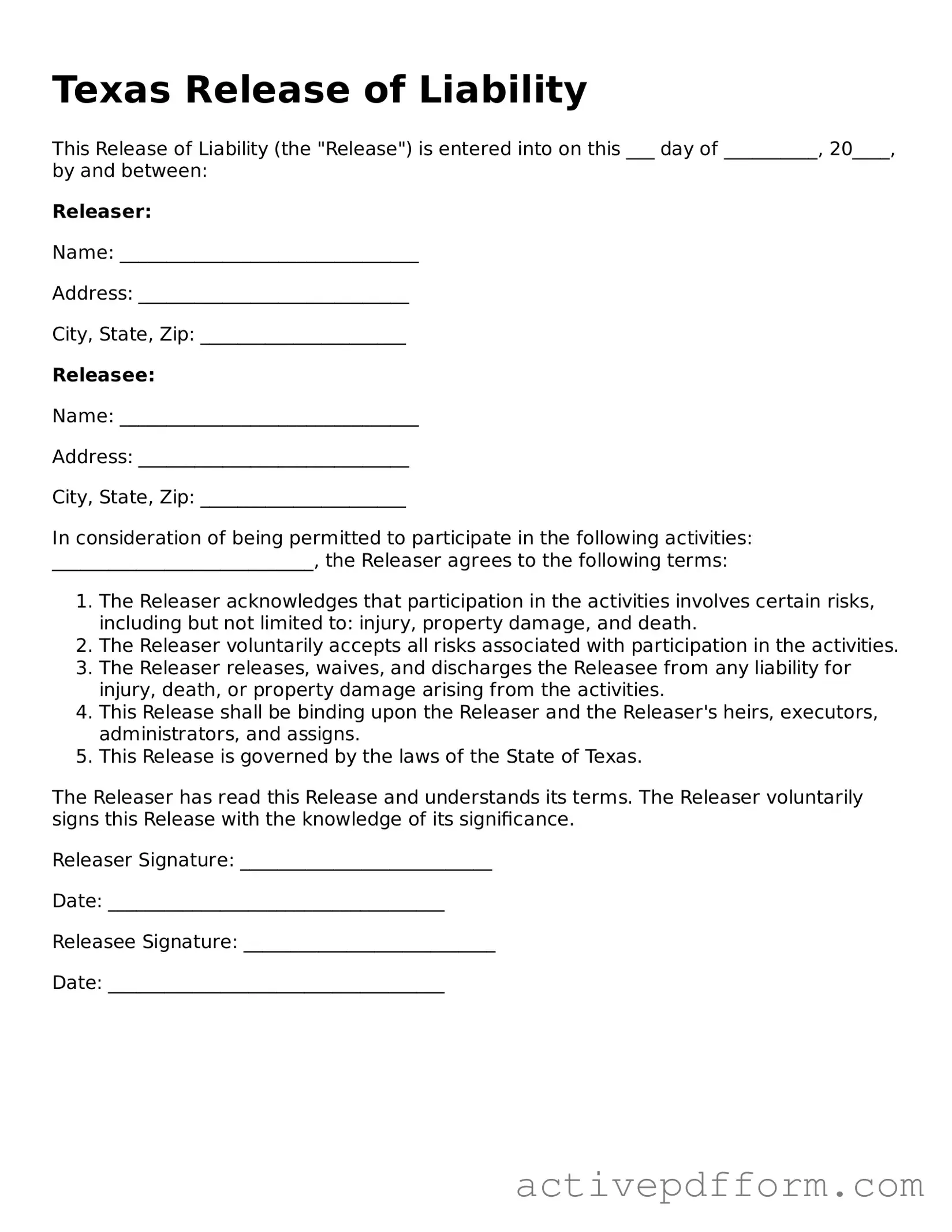What is a Texas Release of Liability form?
A Texas Release of Liability form is a legal document that protects individuals or organizations from being held responsible for injuries or damages that may occur during an activity or event. By signing this form, participants acknowledge the risks involved and agree not to hold the organizer liable for any accidents or injuries that may happen.
Who should use a Release of Liability form?
This form is commonly used by businesses, event organizers, and recreational facilities. If you are hosting an event, offering a service, or running a business where participants may face risks, it is advisable to use this form to safeguard against potential legal claims.
Is a Release of Liability form enforceable in Texas?
Yes, a properly drafted and executed Release of Liability form is generally enforceable in Texas. However, certain conditions must be met for it to be valid. The form should be clear, unambiguous, and voluntarily signed by the participant. It is important to ensure that the language used is easily understood.
Can a minor sign a Release of Liability form?
No, minors cannot legally sign a Release of Liability form on their own. Instead, a parent or legal guardian must sign the form on behalf of the minor. This ensures that the minor is protected and that the legal guardian understands the risks involved.
What happens if someone is injured despite signing the form?
Even if a participant has signed a Release of Liability form, it does not guarantee complete immunity from lawsuits. If negligence can be proven, or if the form is deemed unenforceable, the injured party may still have grounds to file a claim. It is essential to maintain safety standards and provide proper supervision to minimize risks.
Can a Release of Liability form be revoked after signing?
Once signed, a Release of Liability form generally cannot be revoked. However, participants may express their intention not to participate in the activity at any time before it begins. It is crucial to communicate openly about any concerns or changes in circumstances.
How should the Release of Liability form be presented to participants?
The form should be presented clearly and in a straightforward manner. Participants should be given adequate time to read and understand the document before signing. It is advisable to explain the purpose of the form and answer any questions they may have to ensure they are fully informed.
What should I do if I have more questions about the form?
If you have additional questions about the Texas Release of Liability form, it is best to consult with a legal professional. They can provide guidance specific to your situation and help ensure that the form meets all necessary legal requirements.
